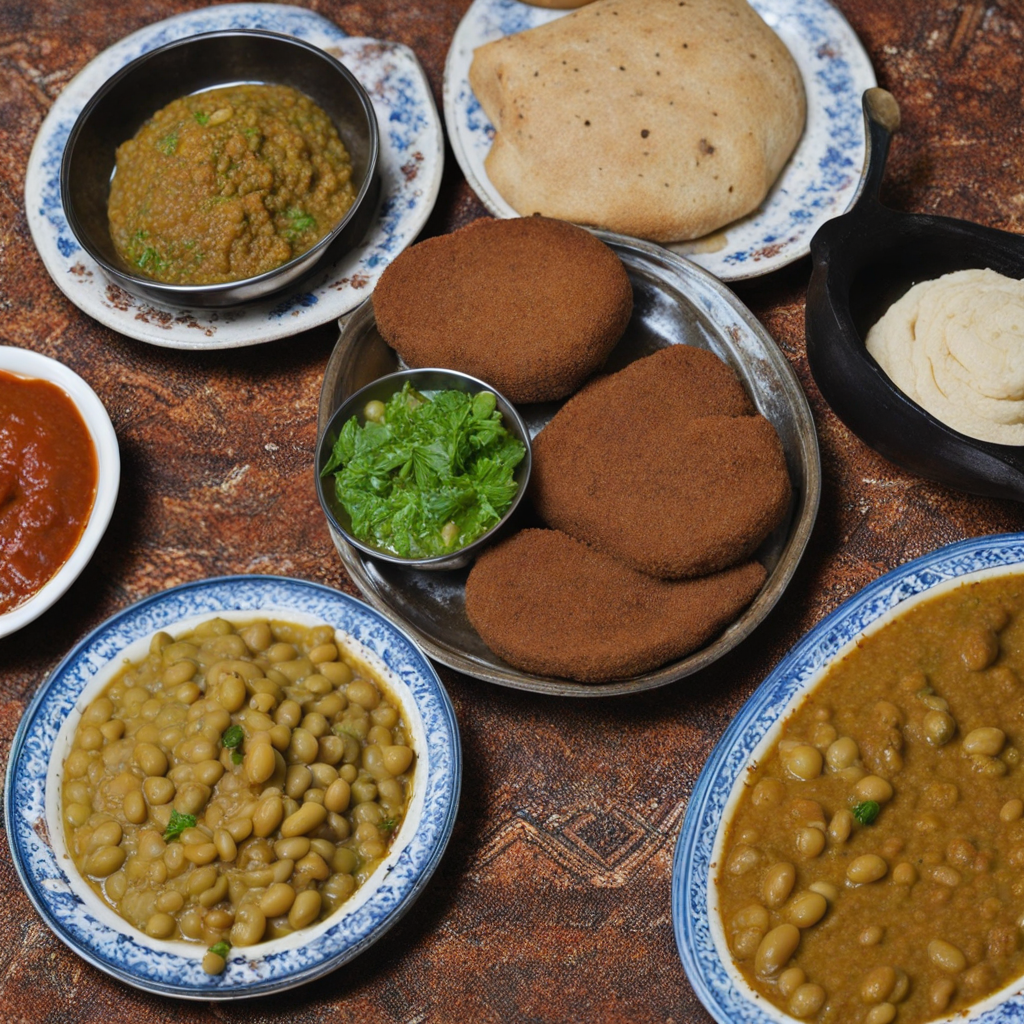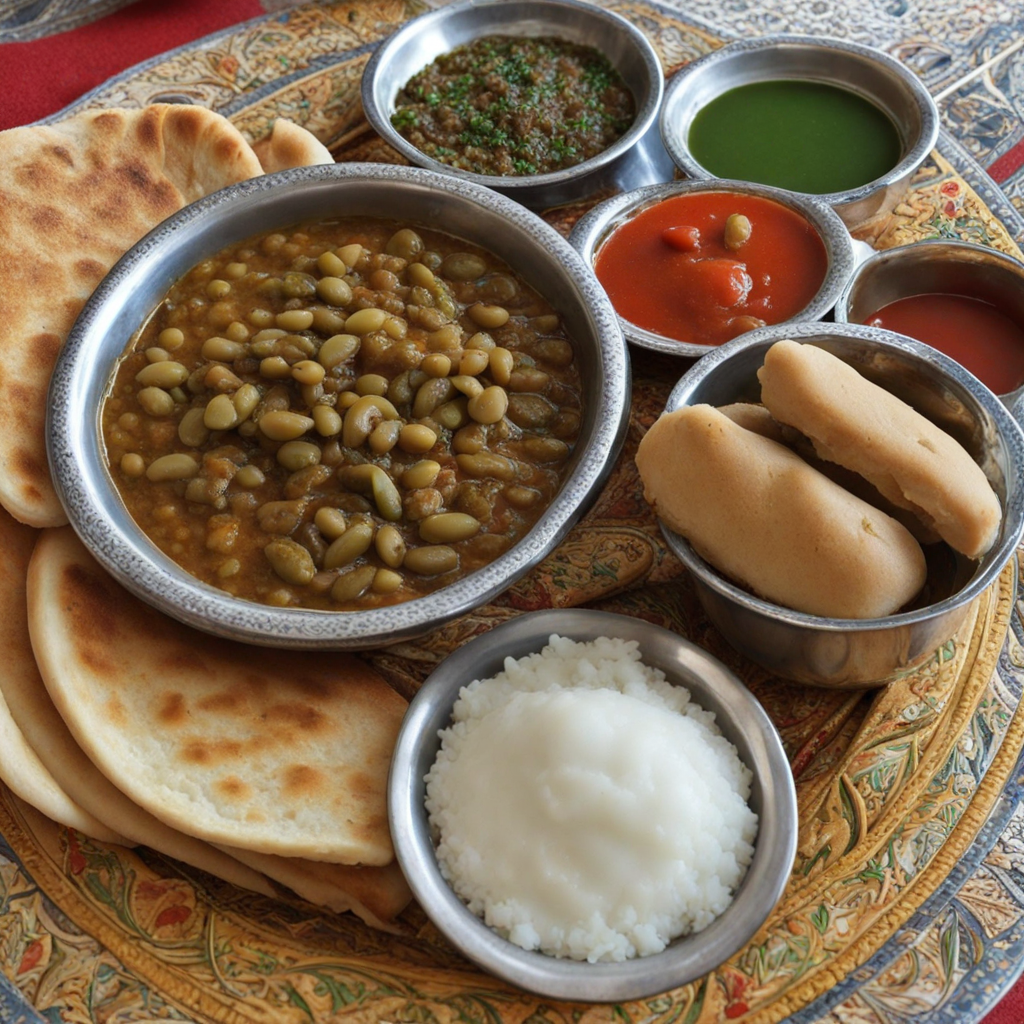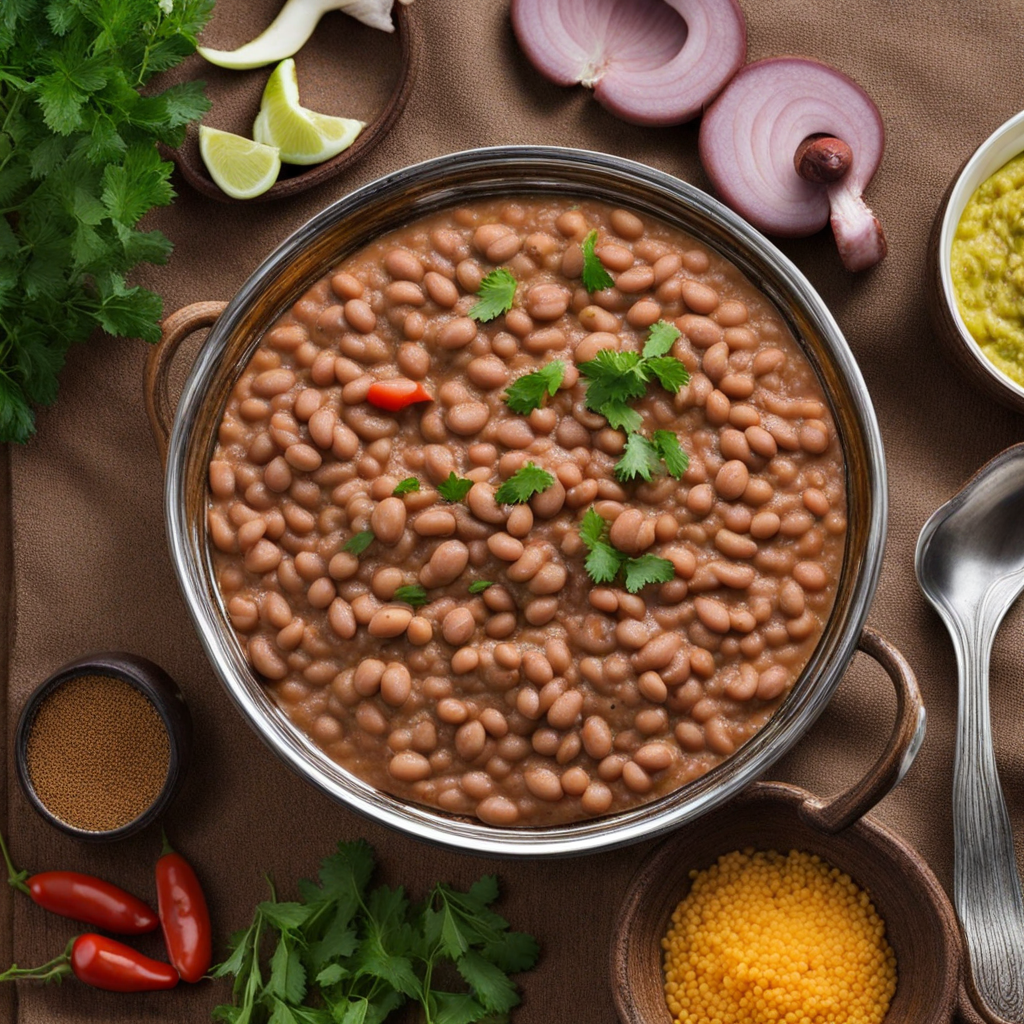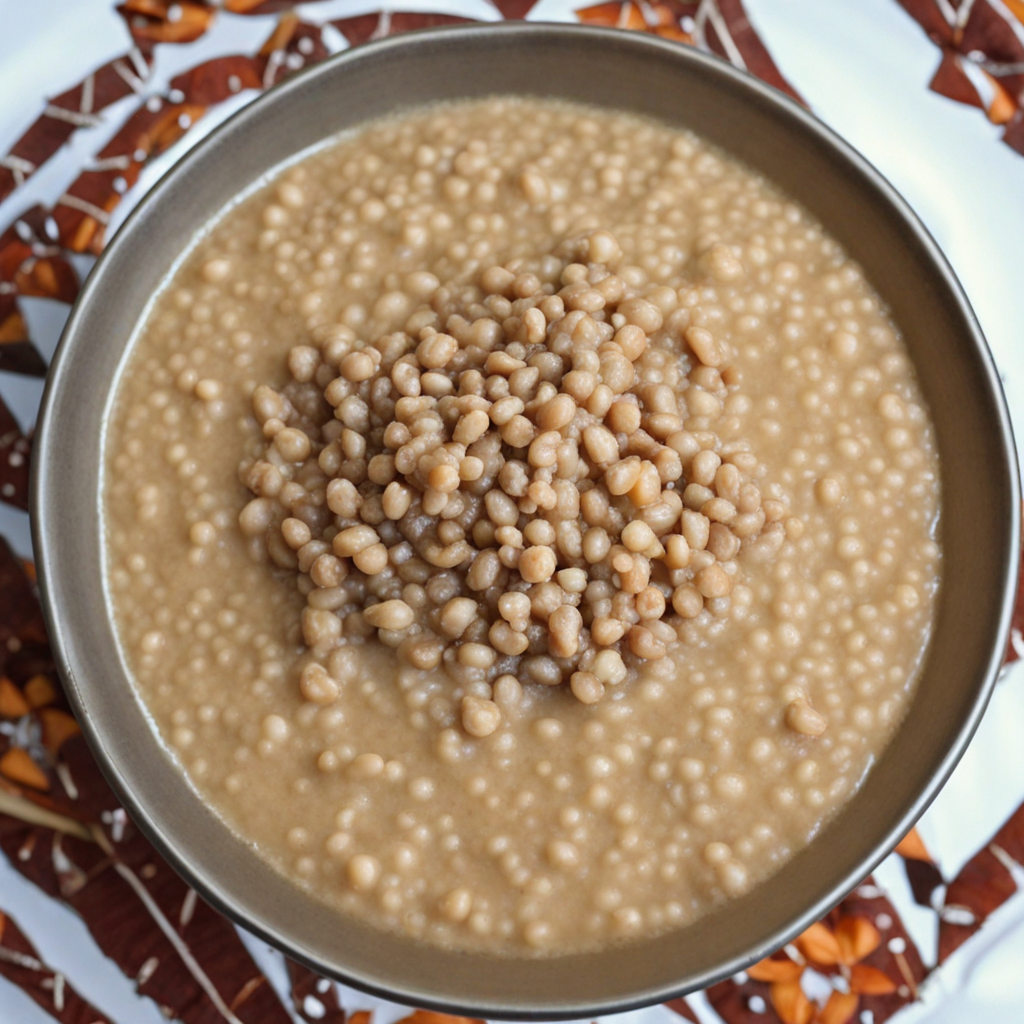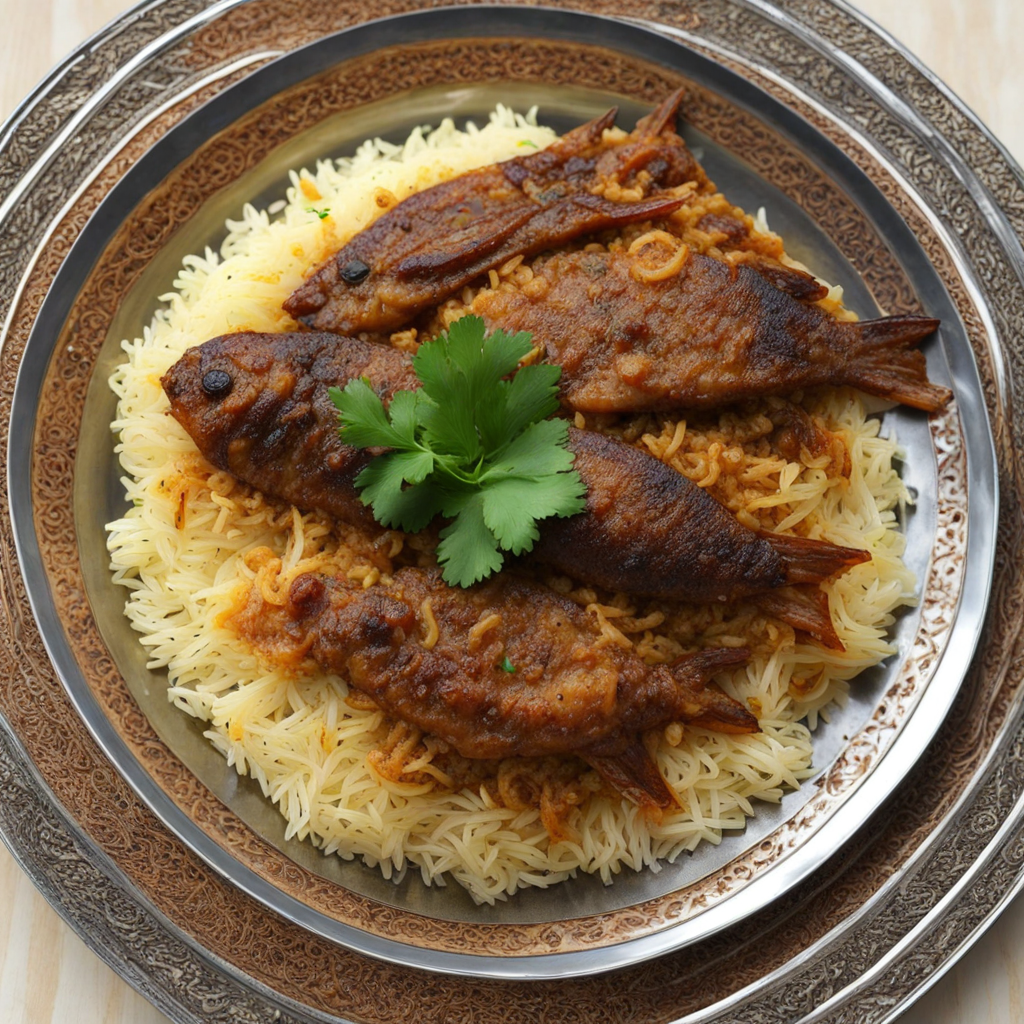Sahan ful
Sahan ful is a traditional Sudanese dish that showcases the rich flavors and culinary heritage of the region. At its core, this dish features fava beans, which are cooked to a creamy consistency and often seasoned with garlic, cumin, and lemon juice. The beans are typically simmered slowly, allowing them to absorb the aromatic spices and develop a depth of flavor that is both comforting and satisfying. The result is a hearty base that can be enjoyed on its own or as a complement to various accompaniments. One of the enchanting aspects of Sahan ful is its versatility. While the fava beans provide the foundation, the dish can be customized with a variety of toppings such as chopped tomatoes, onions, and fresh herbs like parsley or coriander. Some variations may include a drizzle of olive oil or a sprinkle of chili for those who enjoy a bit of heat. The dish is often served with warm, fluffy bread, which is perfect for scooping up the delicious bean mixture and enhancing the overall experience. In Sudan, Sahan ful is more than just a meal; it embodies communal dining and cultural tradition. Typically enjoyed for breakfast or as a light meal, it brings people together around the table, fostering a sense of community. The vibrant colors and enticing aromas of the dish make it an inviting option for anyone looking to explore the unique tastes of Sudanese cuisine. Whether you're a seasoned food enthusiast or a curious newcomer, Sahan ful offers an authentic glimpse into the flavors and customs of Sudan.
How It Became This Dish
The History of صحن فول (Sahan Ful) in Sudan #### Origins and Early Roots Sahan Ful, often referred to simply as ful, is a beloved dish in Sudanese cuisine that primarily consists of fava beans (ful medames). Its origins can be traced back to ancient civilizations in the Nile Valley, where fava beans were cultivated as early as 4000 BCE. These beans, known for their nutritional value, became a staple in the diet of various communities throughout North Africa and the Middle East. The name "ful" itself is derived from the Arabic word for fava beans, and it reflects the dish's deep roots in Arab culture. As trade routes flourished across the region, the preparation and consumption of ful spread from Egypt to the broader Levant and eventually to Sudan. It is believed that the earliest iterations of Sahan Ful were quite simple, consisting of boiled fava beans seasoned with local herbs and spices. #### Cultural Significance In Sudan, Sahan Ful transcends the realm of mere sustenance; it serves as a cultural emblem of community and hospitality. Traditionally enjoyed for breakfast, this dish is often accompanied by a variety of sides such as bread, tomatoes, and chili, allowing for a diverse and flavorful meal. It is common for families to gather around a communal platter, sharing the experience and reinforcing bonds through the act of eating together. Moreover, Sahan Ful is often served at social gatherings and festivities, highlighting its role as a food of celebration. During Ramadan, for example, it is frequently included in iftar meals, marking the breaking of the fast. Its popularity among the Sudanese reflects the broader cultural significance of fava beans in the region, symbolizing nourishment, health, and prosperity. #### The Development of Sahan Ful Over Time As Sudan's history has evolved, so too has the preparation of Sahan Ful. During the Ottoman Empire's influence in the 19th century, culinary exchanges between different regions enriched Sudanese cuisine. New spices and cooking techniques were introduced, enabling the evolution of traditional dishes. Sahan Ful began to incorporate elements such as garlic, lemon, and olive oil, which enhanced its flavor and nutritional profile. In the 20th century, with the rise of urbanization and globalization, the preparation and consumption of Sahan Ful underwent further changes. Street vendors began to pop up in urban centers, serving the dish in more casual settings. This democratization of food culture made Sahan Ful accessible to a wider audience. It became a popular breakfast option for workers and students, symbolizing the hustle and bustle of modern Sudanese life. The dish also adapted to contemporary tastes and dietary preferences. Variations emerged as chefs and home cooks experimented with ingredients, incorporating local produce and spices. While the classic preparation of Sahan Ful is still revered, modern twists such as adding eggs or incorporating spicy sauces have made it a versatile dish that caters to diverse palates. #### Nutritional Value and Health Benefits One of the key reasons for the enduring popularity of Sahan Ful is its remarkable nutritional value. Fava beans are rich in protein, fiber, vitamins, and minerals, making the dish not only filling but also beneficial for health. In a country where food security can be a concern, Sahan Ful serves as a reliable source of nourishment for many families. The dish is particularly valued for its ability to provide sustained energy, which is essential for those engaging in manual labor or other physically demanding activities. #### Sahan Ful in Contemporary Sudan In contemporary Sudan, Sahan Ful continues to be a symbol of national identity and culinary pride. It is commonly found in households, restaurants, and food stalls, showcasing the dish’s versatility. While it retains its traditional roots, Sahan Ful has also evolved into a canvas for culinary creativity. Chefs in Sudan and beyond have begun to experiment with fusion concepts, blending Sahan Ful with international flavors and styles, thereby introducing it to a global audience. Moreover, as Sudan faces challenges related to conflict and economic instability, the resilience of its food culture shines through. Sahan Ful serves as a reminder of the nation’s rich history and heritage, as well as the strength of its people. Community events and food festivals often highlight traditional dishes, including Sahan Ful, as a means of promoting cultural heritage and unity. #### Conclusion Sahan Ful is more than just a dish; it is a reflection of Sudan’s rich culinary history, cultural significance, and social values. Its humble origins as a simple preparation of fava beans have blossomed into a versatile and deeply cherished meal that unites people across generations. As Sudan continues to navigate the complexities of modern life, Sahan Ful stands as a symbol of resilience, community, and the enduring power of food to bring people together. Whether enjoyed in a bustling street stall or a family home, Sahan Ful remains a vital part of Sudanese identity—a delicious testament to the country’s past, present, and future.
You may like
Discover local flavors from Sudan


